Anoplophora chinensis(ANOLCN)
Photos
All photos included on this page can only be used for educational purposes.
For publication in journals, books or magazines, permission should be obtained from the original photographers with a copy to EPPO.

Anoplophora chinensis on Acer palmatum
Courtesy: Wietse den Hartog
(NPPO of the Netherlands)

Adult
Courtesy: Wietse den Hartog (NPPO of the Netherlands)

Adult
Courtesy: Wietse den Hartog (NPPO of the Netherlands)
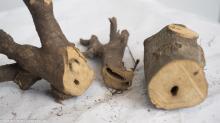
Gallery of Anoplophora chinensis in Malus
Courtesy: Wietse den Hartog NVWA (NPPO the Netherlands)
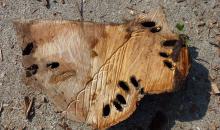
Tunnels in a cut section of trunk, Lombardy, Italy
Courtesy: Dominic Eyre
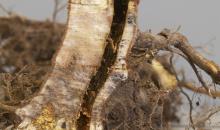
Vertical section through a gallery
Courtesy: Dominic Eyre

Anoplophora chinensis on Vaccinium corymbosum
Courtesy: Maja Pintar, Centre for Plant Protection, CAAF (HR)

Adult
Courtesy: Wietse den Hartog
(NPPO of the Netherlands)
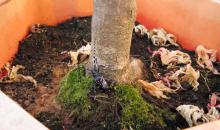
Adult and oviposition on Acer
Courtesy: Wietse den Hartog NVWA (NPPO the Netherlands)
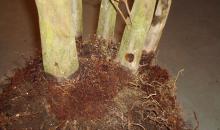
Fresh exit hole on Corylus
Courtesy: Wietse den Hartog NVWA (NPPO the Netherlands)

Oviposition on Acer
Courtesy: Wietse den Hartog NVWA (NPPO the Netherlands)
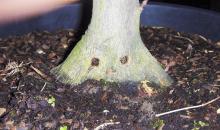
Old exit holes on Acer
Courtesy: Wietse den Hartog NVWA (NPPO the Netherlands)
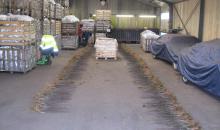
Investigation of imported plants by the first detection dogs for A. chinensis and A. glabripennis. Trainers and dogowners Ute Hoyer-Tomiczek (BFW, Austria) and Gabriele Sauseng
Courtesy: Wietse den Hartog NVWA (NPPO the Netherlands)
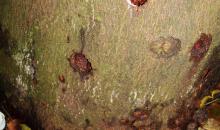
Closed up and new exit holes on Acer
Courtesy: Wietse den Hartog NVWA (NPPO the Netherlands)

Detected larvae during investigation of imported plants by the first detection dogs for A. chinensis and A. glabripennis. Trainers and dogowners Ute Hoyer-Tomiczek (BFW, Austria) and Gabriele Sauseng
Courtesy: Wietse den Hartog NVWA (NPPO the Netherlands)

Investigation of imported plants by the first detection dogs for A. chinensis and A. glabripennis. Trainers and dogowners Ute Hoyer-Tomiczek (BFW, Austria) and Gabriele Sauseng
Courtesy: Wietse den Hartog NVWA (NPPO the Netherlands)
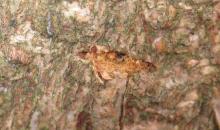
Oviposition on Acer
Courtesy: Wietse den Hartog NVWA (NPPO the Netherlands)

Feeding of Anoplophora chinensis
Courtesy: Wietse den Hartog NVWA (NPPO the Netherlands)

Oviposition spots on Acer
Courtesy: Wietse den Hartog NVWA (NPPO the Netherlands)
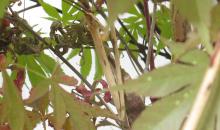
Feeding of Anoplophora chinensis
Courtesy: Wietse den Hartog NVWA (NPPO the Netherlands)
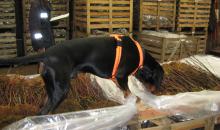
Investigation of imported plants by the first detection dogs for A. chinensis and A. glabripennis. Trainers and dogowners Ute Hoyer-Tomiczek (BFW, Austria) and Gabriele Sauseng
Courtesy: Wietse den Hartog NVWA (NPPO the Netherlands)
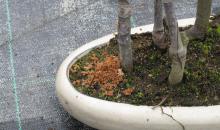
Symptoms on Acer palmatum
Courtesy: Wietse den Hartog NVWA (NPPO the Netherlands)
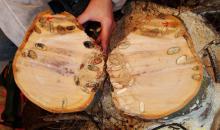
Galleries on Acer
Courtesy: Wietse den Hartog NVWA (NPPO the Netherlands)

Larva
Courtesy: Wietse den Hartog NVWA (NPPO the Netherlands)
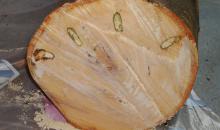
Galleries on Acer
Courtesy: Wietse den Hartog NVWA (NPPO the Netherlands)

Larva
Courtesy: Wietse den Hartog NVWA (NPPO the Netherlands)

Larva
Courtesy: Wietse den Hartog NVWA (NPPO the Netherlands)
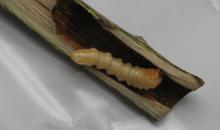
Larva
Courtesy: Wietse den Hartog NVWA (NPPO the Netherlands)

Closed up exit holes on Acer
Courtesy: Wietse den Hartog NVWA (NPPO the Netherlands)

Detection of Anoplophora chinensis and A. glabripennis with X-ray
Courtesy: Wietse den Hartog NVWA (NPPO the Netherlands)
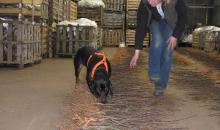
Investigation of imported plants by the first detection dogs for A. chinensis and A. glabripennis. Trainers and dogowners Ute Hoyer-Tomiczek (BFW, Austria) and Gabriele Sauseng
Courtesy: Wietse den Hartog NVWA (NPPO the Netherlands)
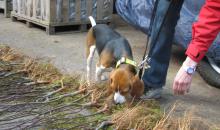
Investigation of imported plants by the first detection dogs for A. chinensis and A. glabripennis. Trainers and dogowners Ute Hoyer-Tomiczek (BFW, Austria) and Gabriele Sauseng
Courtesy: Wietse den Hartog NVWA (NPPO the Netherlands)
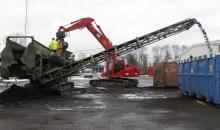
Eradication: chipping of infected trees
Courtesy: Wietse den Hartog NVWA (NPPO the Netherlands)
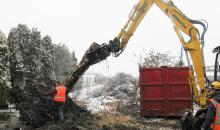
Eradication: removal and inspection of infected trees
Courtesy: Wietse den Hartog NVWA (NPPO the Netherlands)
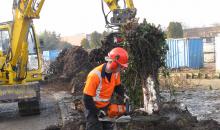
Eradication: removal and inspection of infected trees
Courtesy: Wietse den Hartog NVWA (NPPO the Netherlands)
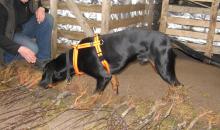
Investigation of imported plants by the first detection dogs for A. chinensis and A. glabripennis. Trainers and dogowners Ute Hoyer-Tomiczek (BFW, Austria) and Gabriele Sauseng
Courtesy: Wietse den Hartog NVWA (NPPO the Netherlands)
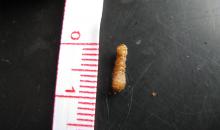
Detected A. chinensis larva during investigation of imported plants by the first detection dogs for A. chinensis and A. glabripennis. Trainers and dogowners Ute Hoyer-Tomiczek (BFW, Austria) and Gabriele Sauseng
Courtesy: Wietse den Hartog NVWA (NPPO the Netherlands)
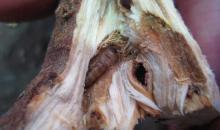
Detected A. chinensis larva during investigation of imported plants by the first detection dogs for A. chinensis and A. glabripennis. Trainers and dogowners Ute Hoyer-Tomiczek (BFW, Austria) and Gabriele Sauseng
Courtesy: Wietse den Hartog NVWA (NPPO the Netherlands)
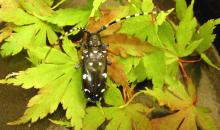
Adult
Courtesy: Doris Hölling, Swiss Federal Institute WSL (CH)
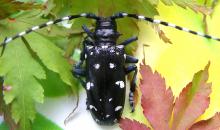
Adult
Courtesy: Doris Hölling, Swiss Federal Institute WSL (CH)
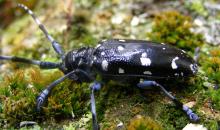
Adult
Courtesy: Doris Hölling, Swiss Federal Institute WSL (CH)
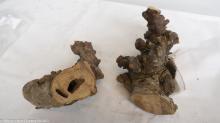
Gallery of Anoplophora chinensis in Malus
Courtesy: Wietse den Hartog NVWA (NPPO the Netherlands)

Exit holes of Anoplophora chinensis in Malus
Courtesy: Wietse den Hartog NVWA (NPPO the Netherlands)

Chemical treatment (endotherapy)
Courtesy: M. Maspero, Fondazione Minoprio, Como (IT)

Emerging adult chewing its exit hole
Courtesy: M. Maspero, Fondazione Minoprio, Como (IT)

Potted Acer saccharinum
Courtesy: M. Maspero, Fondazione Minoprio, Como (IT)

Young larva of A. chinensis with an ant
Courtesy: M. Maspero, Fondazione Minoprio, Como (IT)

A. chinensis female searching for a suitable oviposition site.
Courtesy: M. Maspero, Fondazione Minoprio, Como (IT).

Oviposition
Courtesy: M. Maspero, Fondazione Minoprio, Como (IT)

Efficacy evaluation trials of insecticides in public areas
Courtesy: M. Maspero, Fondazione Minoprio, Como (IT)

A. chinensis making a small incision before oviposition.
Courtesy: M. Maspero, Fondazione Minoprio, Como (IT).

Adult.
Courtesy: Plant Protection Service, Wageningen, Netherlands.

Oozing sap on an infested Platanus.
Courtesy: M. Maspero, Fondazione Minoprio, Como (IT).

Exit holes of A. chinensis.
Courtesy: M. Maspero, Fondazione Minoprio, Como (IT).

Tree killed by A. chinensis.
Courtesy: M. Maspero, Fondazione Minoprio, Como (IT).

Eradication: cutting aerial parts of infested trees.
Courtesy: M. Maspero, Fondazione Minoprio, Como (IT).

Damage.
Courtesy: Plant Protection Service, Wageningen, Netherlands.

Efficacy evaluation trials of insecticides under a plastic house.
Courtesy: M. Maspero, Fondazione Minoprio, Como (IT).

Exit holes of A. chinensis.
Courtesy: M. Maspero, Fondazione Minoprio, Como (IT).

Female ovipositor
Courtesy: M. Maspero, Fondazione Minoprio, Como (IT)

Mating A. chinensis
Courtesy: M. Maspero, Fondazione Minoprio, Como (IT).

A. chinensis egg
Courtesy: M. Maspero, Fondazione Minoprio, Como (IT)

T-shaped oviposition scar
Courtesy: M. Maspero, Fondazione Minoprio, Como (IT)

Mating A. chinensis
Courtesy: M. Maspero, Fondazione Minoprio, Como (IT)

Laboratory tests on the efficacy of pesticides against A. chinensis
Courtesy: M. Maspero, Fondazione Minoprio, Como (IT)

Larva.
Courtesy: Plant Protection Service, Wageningen, Netherlands

Exit holes of A. chinensis
Courtesy: M. Maspero, Fondazione Minoprio, Como (IT)

Adult A. chinensis
Courtesy: M. Maspero, Fondazione Minoprio, Como (IT)

Female A. chinensis.
Courtesy: M. Maspero, Fondazione Minoprio, Como (IT).

Mature larva of A. chinensis.
Courtesy: M. Maspero, Fondazione Minoprio, Como (IT).

Emerging adult of A. chinensis.
Courtesy: M. Maspero, Fondazione Minoprio, Como (IT).

Eradication: grinding an infested stump.
Courtesy: M. Maspero, Fondazione Minoprio, Como (IT).

Eradication campaign.
Courtesy: M. Maspero, Fondazione Minoprio, Como (IT).

A. chinensis egg.
Courtesy: M. Maspero, Fondazione Minoprio, Como (IT).

Ovoid holes made by the female ovipositor during egg-laying.
Courtesy: M. Maspero, Fondazione Minoprio, Como (IT).

Eradication: cutting aerial parts of infested trees.
Courtesy: M. Maspero, Fondazione Minoprio, Como (IT).

Adult exit holes of Anoplophora chinensis on Acer trees in Italy.
Courtesy: Anne-Sophie Roy, EPPO.

Chemical treatment.
Courtesy: M. Maspero, Fondazione Minoprio, Como (IT).

A. chinensis young larva.
Courtesy: M. Maspero, Fondazione Minoprio, Como (IT).

Galleries of A. chinensis.
Courtesy: M. Maspero, Fondazione Minoprio, Como (IT).

Eradication: cutting aerial parts of infested trees.
Courtesy: M. Maspero, Fondazione Minoprio, Como (IT).

Eradication: fenced storage area of infested plant material.
Courtesy: M. Maspero, Fondazione Minoprio, Como (IT).

Exit holes of A. chinensis with sawdust.
Courtesy: M. Maspero, Fondazione Minoprio, Como (IT).

Maturation feeding of A. chinensis.
Courtesy: M. Maspero, Fondazione Minoprio, Como (IT).

Oviposition.
Courtesy: M. Maspero, Fondazione Minoprio, Como (IT).

Male A. chinensis.
Courtesy: M. Maspero, Fondazione Minoprio, Como (IT).

Larva of Anoplophora chinensis.
Courtesy: Anne-Sophie Roy, EPPO.

Adult exit holes of Anoplophora chinensis on Acer trees in Italy.
Courtesy: Anne-Sophie Roy, EPPO.

Larva of Anoplophora chinensis.
Courtesy: Anne-Sophie Roy, EPPO.

Damage of Anoplophora chinensis.
Courtesy: Anne-Sophie Roy, EPPO.

Secondary infections on trees attacked by A. chinensis
Courtesy: M. Maspero, Fondazione Minoprio, Como (IT)

A. chinensis egg
Courtesy: M. Maspero, Fondazione Minoprio, Como (IT)

Pupae of Anoplophora chinensis in a root
Courtesy: Matteo Maspero, Centro MiRT - Fondazione Minoprio (IT)

Eradication: chipping infested trees.
Courtesy: M. Maspero, Fondazione Minoprio, Como (IT).






























































































